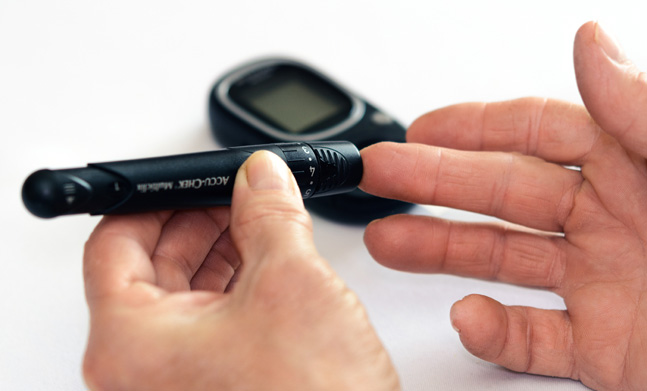Steps you can take to reduce risk of type 2 diabetes

More than 30 million Americans have diabetes – about 1 in 10 – and 90% to 95% of them have type 2 diabetes, according to the Centers for Disease Control and Prevention.
Type 2 diabetes most often develops in people over the age of 45, but more and more children, teens and young adults are also developing it, according to the CDC.
November is Diabetes Awareness Month, a time to raise awareness about diabetes risk factors and encourage people to make healthy changes.
Type 2, or adult-onset diabetes, is a lifelong disease that prevents a person’s body from using insulin the right way. People with type 2 diabetes are said to have insulin resistance.
One of the points Diabetes Awareness Month emphasizes is how to avoid contracting type 2 diabetes in the first place. Certain factors make getting the disease more likely, such as:
- Age: People 45 and older are more likely to develop type 2 diabetes.
- Family: If you have a parent or sibling with diabetes, you are more likely to get diabetes.
- Ethnicity: The disease is more prevalent in African Americans, Alaska Natives, Native Americans, Asian Americans, Hispanic or Latinos, and Pacific Islander Americans.
Some conditions that could lead to type 2 diabetes are related to your health and medical history. Your doctor may be able to help if you have:
- Prediabetes (an elevated blood sugar not high enough to be diabetes)
- Heart and blood vessel disease
- High blood pressure
- Low HDL cholesterol (known as “good” cholesterol)
- High triglycerides
- Being overweight or obese
- Having a baby that weighed more than nine pounds
- Having gestational diabetes while you were pregnant
Lifestyle habits also raise your risk of diabetes, and these are elements that you can do something about it. That includes getting little or no exercise, smoking, being under stress or sleeping too little or too much.
If you believe your lifestyle might be putting you on the track to develop type 2 diabetes, be proactive. Simple changes can make a big difference, according to WebMD.
- Lose weight. Dropping just 7% to 10% of your weight can cut your risk of type 2 diabetes in half.
- Get active. Moving muscles use insulin. Taking a brisk, 30-minute walk every day will cut your risk by a third.
- Eat right. Avoid processed carbs, sugary soft drinks, and fats, and limit red and processed meats.
- Quit smoking.
For more information on both type 1 and type 2 diabetes, visit the Michigan chapter of the American Diabetes Association at www.diabetes.org/community/local-offices/michigan.



